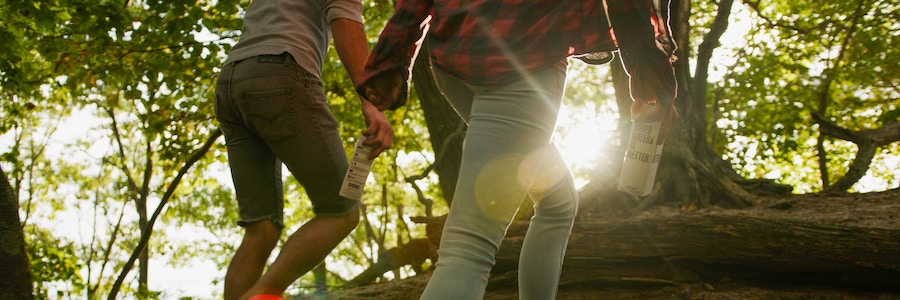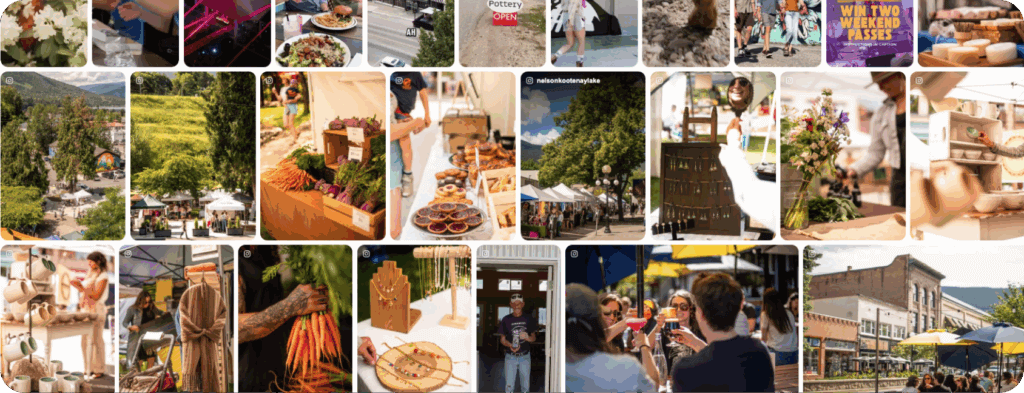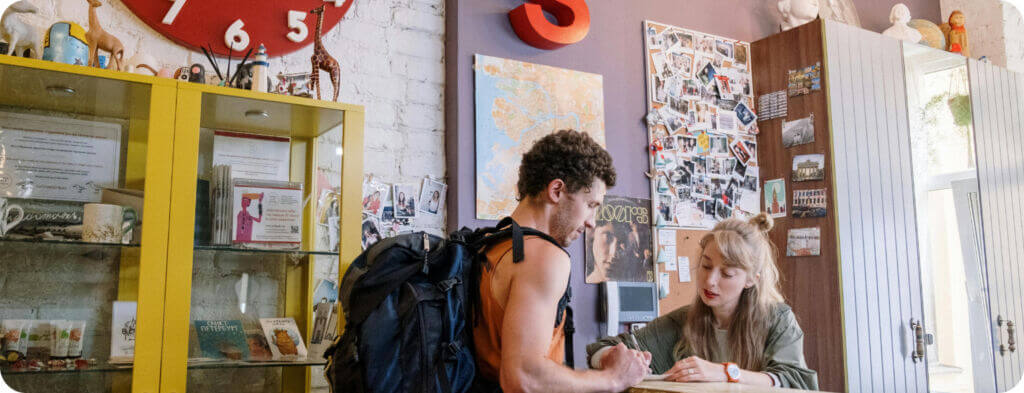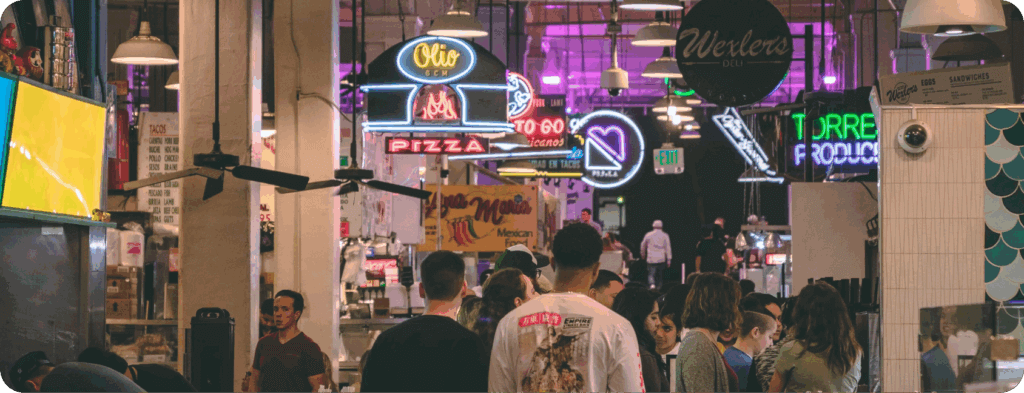
Here at CrowdRiff, we’ve received hundreds of questions about how travel and tourism marketers plan, scale and measure visual marketing today.
We decided to pick the top 50 and make them available to you in this free guide.
Here’s a sneak peek at some of our favorites:
What role should visual marketing play in my content strategy?
Probably a bigger role than it does now! There are a couple key trends that indicate visual storytelling isn’t going anywhere, and that it should take centre stage in your content strategy.
- When it comes to communicating brand story, 65% of senior marketers believe that visuals are core to
their strategy. - More than half of B2C content creators say creating visual content is their top priority.
- 55% of travel marketers plan to spend more on Facebook and Instagram in 2019.
Every moment in your guest experience tells a story visually. Your marketing effectiveness grows exponentially when it’s no longer just your brand story, but becomes part of your guest story. A good visual marketing strategy sets the stage so that your guests can perform on it.
– Jesse Desjardins, Strategist, The Guest Experience Map
How early should I start planning the visuals for my campaign?
If you’re planning a professional photo or video shoot, the earlier you can plan the better. We recommend 8-12 weeks in advance. For UGC visuals, you need to allow time for sourcing and acquiring rights to content, but people typically respond within 48 hours to a request, so you can plan 1-4 weeks in advance.
My advice is to start planning your visual content the moment you decide to produce a campaign, because your visuals can affect so many other facets of the project. From the branding, to the audience you decide to target, even down to what mediums the campaign will be distributed through, the visuals should be one of the driving elements your marketing team is making their decisions around.
– Kristen Pepper, Marketing Manager, Huntsville/Madison County CVB
Is UGC more effective on any particular social media platform?
Only you know how to best reach your target audience. But you should be aware of the trends.
According to Sojern’s State of The Travel Industry Report, Facebook and Instagram are the most effective platforms for targeting new audiences—especially from the Airline and Cruise verticals. Across all regions, Instagram is the most effective platform for driving reach and brand awareness.

What tips do you have for keeping all our visual content organized?
Ever hear the old phrase, “a place for everything and everything in its place?” The same goes for visual content. If your visual assets are scattered across users, systems and folders, it’s difficult to find the images you need, when you need them.
Here are two tips we’d recommend to start getting organized:
1) Gather up all your content. USBs, hard drives, cloud storage—you name it. Give it a central hub to live.
2) Tag your content. You may already have a system for organizing content but tags are essential to making search easy.
Now, if you have hundreds or thousands of visuals, it will be incredibly time consuming to tag your content at scale. That’s when you might consider a visual marketing platform (like CrowdRiff).
Would you recommend linking your CTAs to outside websites or just to internal pages on your website?
It depends on your objectives. Most brands we work with have CTAs on their visuals that link deeper into their site, to a partner listing page or to a booking page. If you are mandated to drive traffic to partners, you may want to provide links to partner websites directly from the visual CTA.
Just be sure to set link parameters to open a new tab when linking off-site, so users don’t bounce from the existing tab and stay on your page longer.
We try to keep users on site as much as possible, of course, but there are times when it’s appropriate to link off site. An example for us is linking to a city/county/state park’s site if the info there is more informative than our own content.
– Chad Hays, Senior Online Marketing Manager, Visit Phoenix
How can DMOs balance the needs of the users vs the partners/sponsors?
If the user doesn’t have a good experience, they will leave your website. It’s really that simple. We’d recommend that DMOs find ways to educate their partners or sponsors, so they don’t have to compromise the user experience.
Say you wanted to post about the top five burger joints around town. Some DMOs might just pick the top 5 places their members are paying them for. But you’re going to lose credibility in the user’s eyes because TripAdvisor is telling them something completely different. Instead, you could list more restaurants and highlight your partners with an icon.
Find a way to distinguish who your official partners are. If you want some inspiration, we’d recommend checking out Visit Savannah.
Visit Savannah has done a beautiful job making their site feel like a digital magazine. The way their content is written evokes a sensory experience, rather than just delivering information. Even their sponsored content is written with the same care as the rest of their site copy, so it doesn’t feel like an ad.
The takeaway for marketers here is to not compromise on the editorial quality of your publication for sponsored content or ads.
On our website, we maintain a balance of curated editorial content, paid partner listings, sponsored content, CrowdRiff assets from visitors and locals, and invite local guest bloggers to publish articles on our blog. I believe that we achieve authenticity by HOW we tell the story of our city, and nothing is as powerful as highlighting the experiences of our visitors and our locals—they tell our story for us.
– Molly Burke Allwein, Senior Marketing and Community Affairs Manager, Visit Pittsburgh
Want more insights into the minds of leading travel & tourism marketers and answers to their top questions? Download the eBook below for more advice on planning, sourcing and optimizing visual content.












